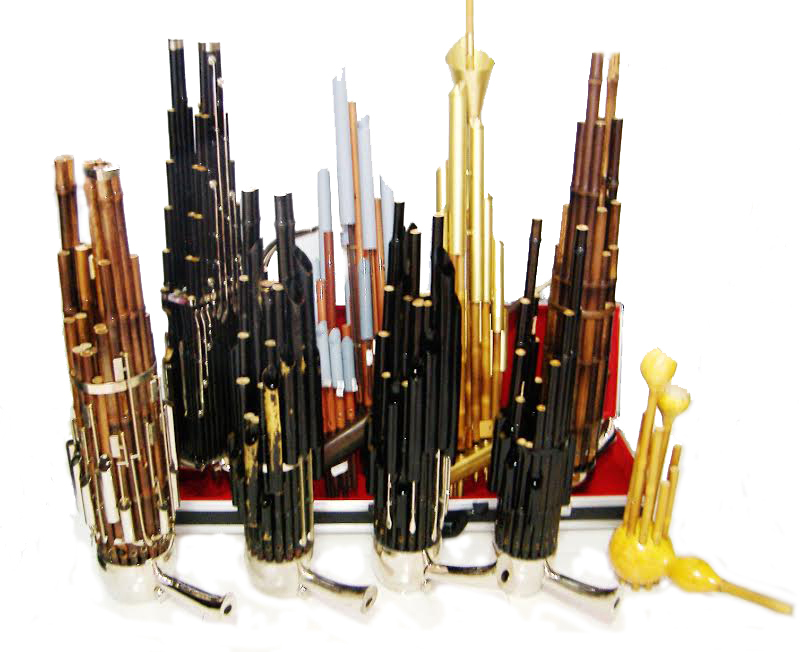
The Sheng (笙), also called the Chinese mouth organ, is one of the most ancient traditional Chinese instrument that is still in common use today. This instrument existed as far back as 3000 years ago. It is popular among the chinese people in the Yin Dynasty (1401 – 1122 B.C.).
The Sheng has 17 or more (up to 37) vertical bamboo reed pipes of varying lengths set in a cylindrical base with a mouth piece attached. By virtue of its construction, Sheng is the only Chinese wind instrument that is capable of playing melody and chordal accompaniment or various notes simultaneously. Music is produced by blowing or sucking (inhaling) the air through the mouth piece which then vibrate the brass reeds to produce the sound. Sheng is also the instrument that inspired the invention of Concertina, Accordion and Harmonica using the same method where sound is produced.
The 3 main types of Sheng used in the modern chinese orchestra are the Soprano Keyed Sheng, Alto Sheng and Bass Sheng. Most of the improved Shengs have 3 octaves and are able to play complicated modernized music.
The video below features the Sheng player accompanying the Suona* soloist. The Sheng player uses many traditional ‘blowing’ techniques(山东三大气)to accompany the soloist.
* Suona(唢呐)is a Chinese double-reed instrument which is similar to the oboe.